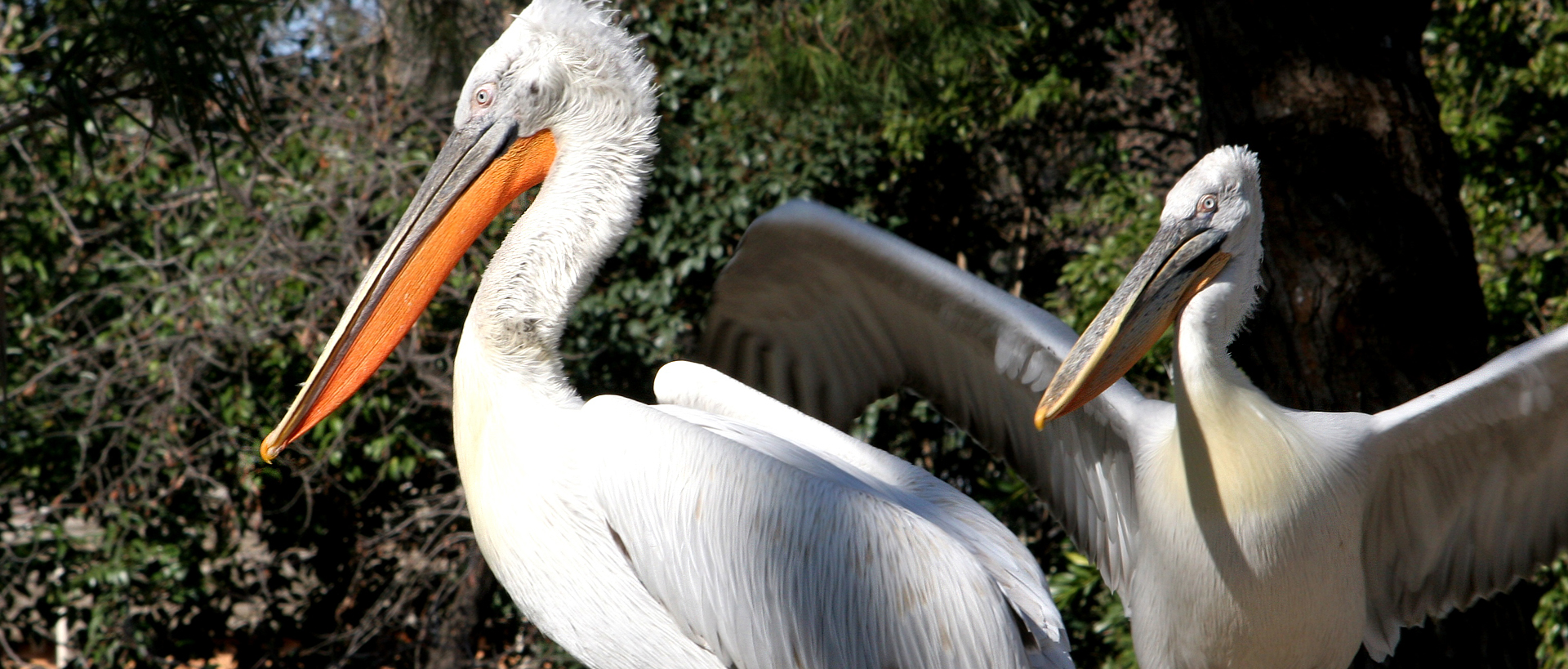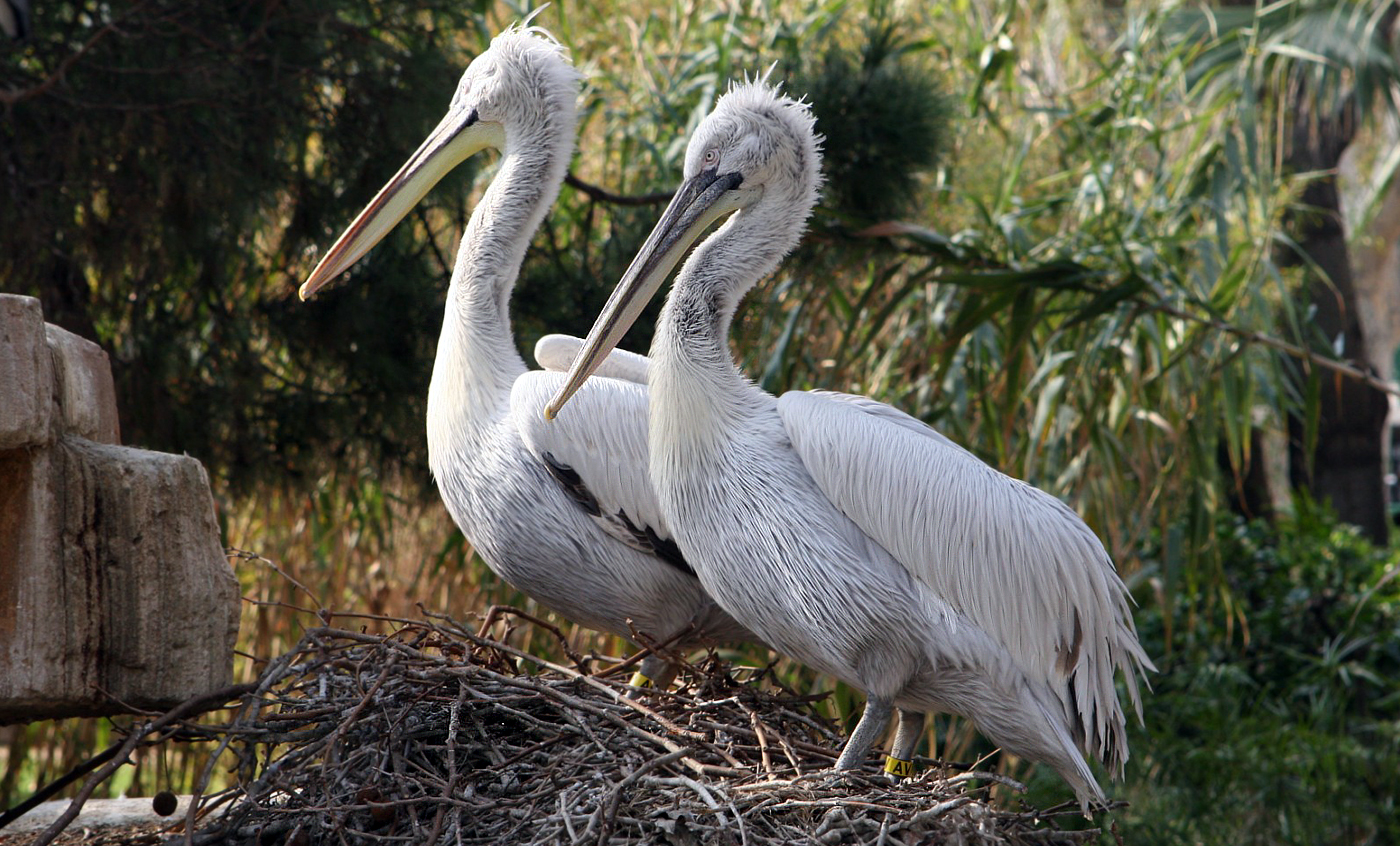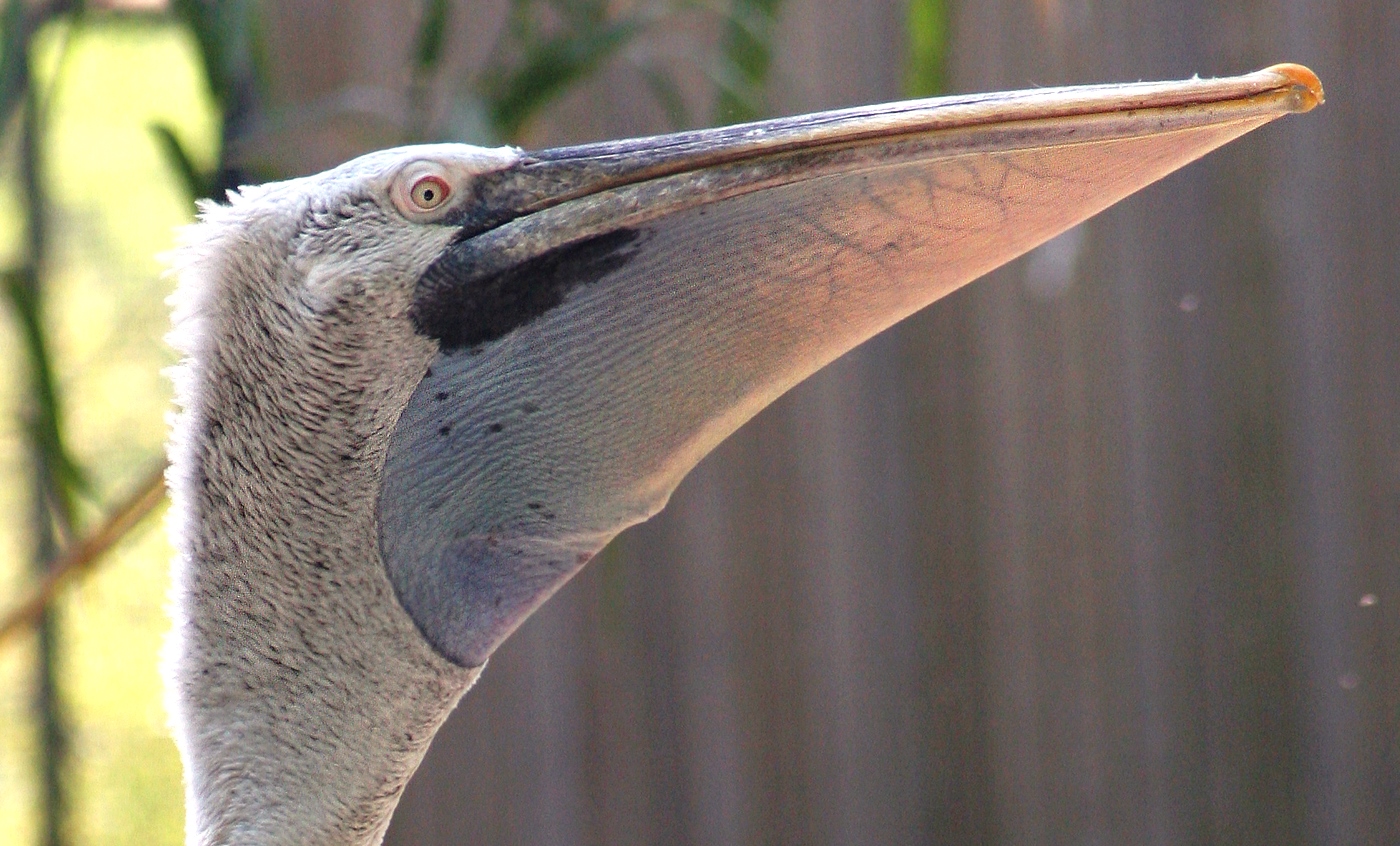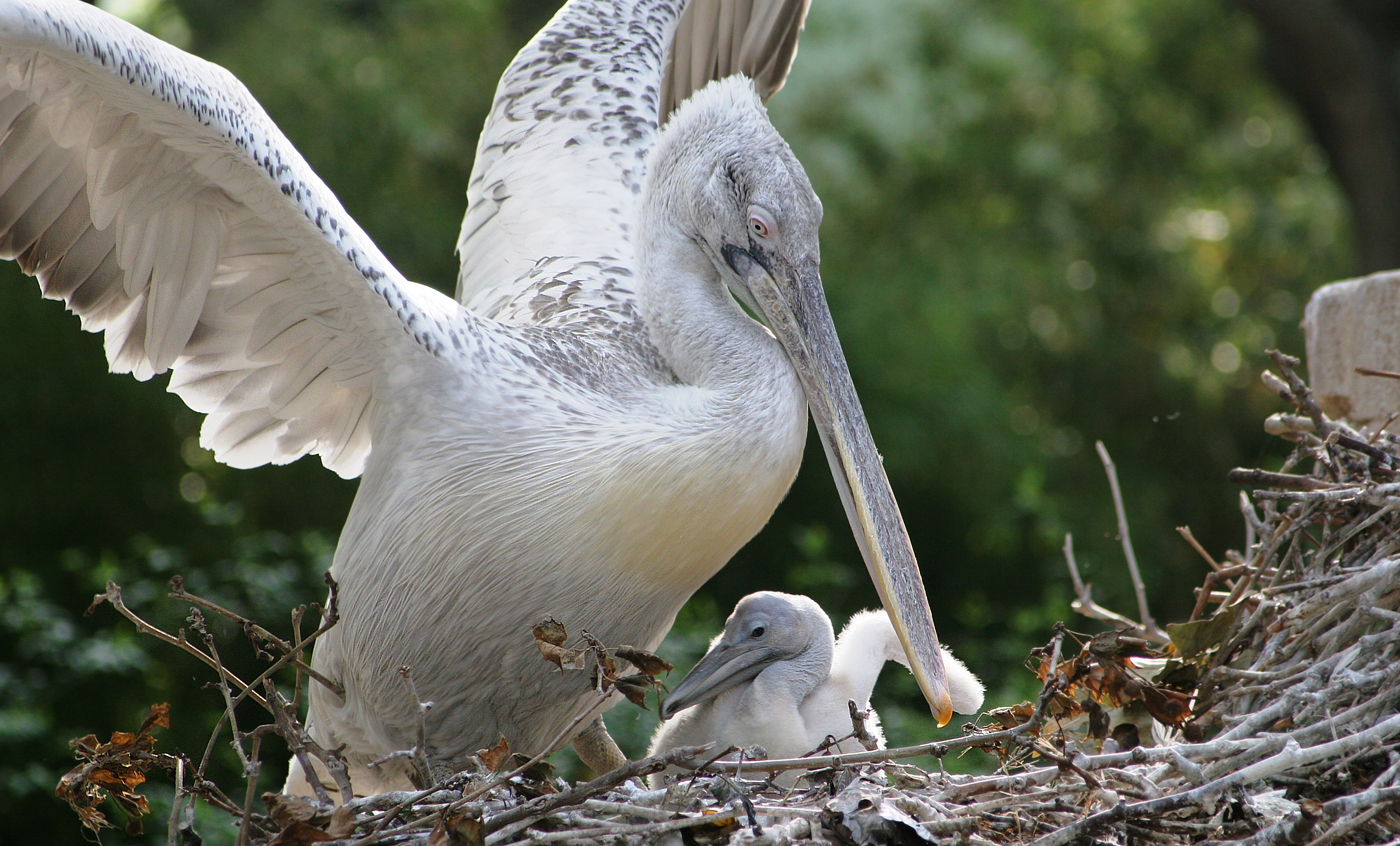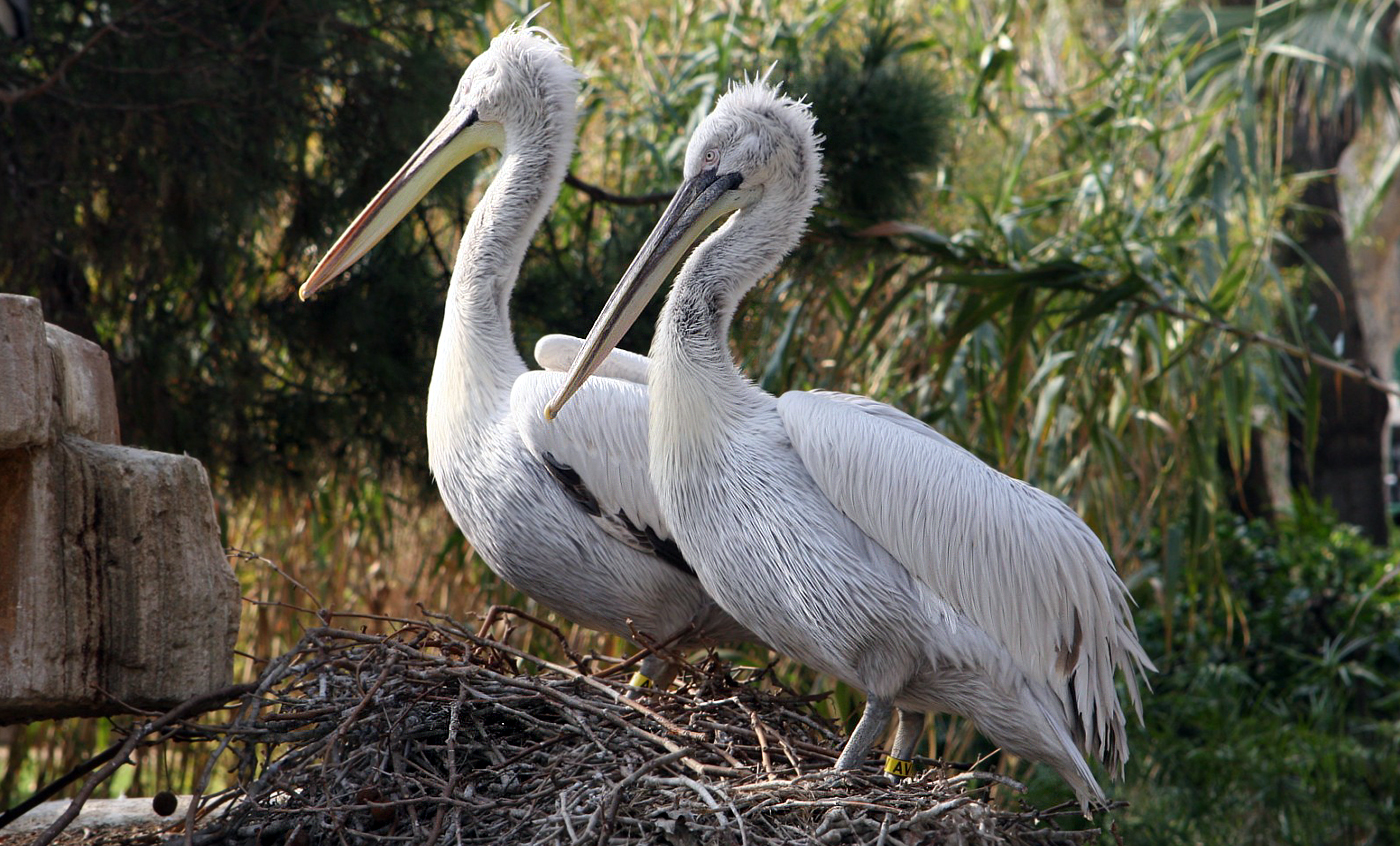Dalmatian pelican
The Dalmatian pelican lives on the coastal areas, marshes and shallow lakes covering a wide area stretching from the south-east of Europe to the east of China. In spite of this, it is an endangered species everywhere, especially in Europe, where its numbers have declined from millions at the beginning of the 20th century to the 1,000 pairs that were in existence in 1980.
Natural habit
Southeast Europe to eastern China.
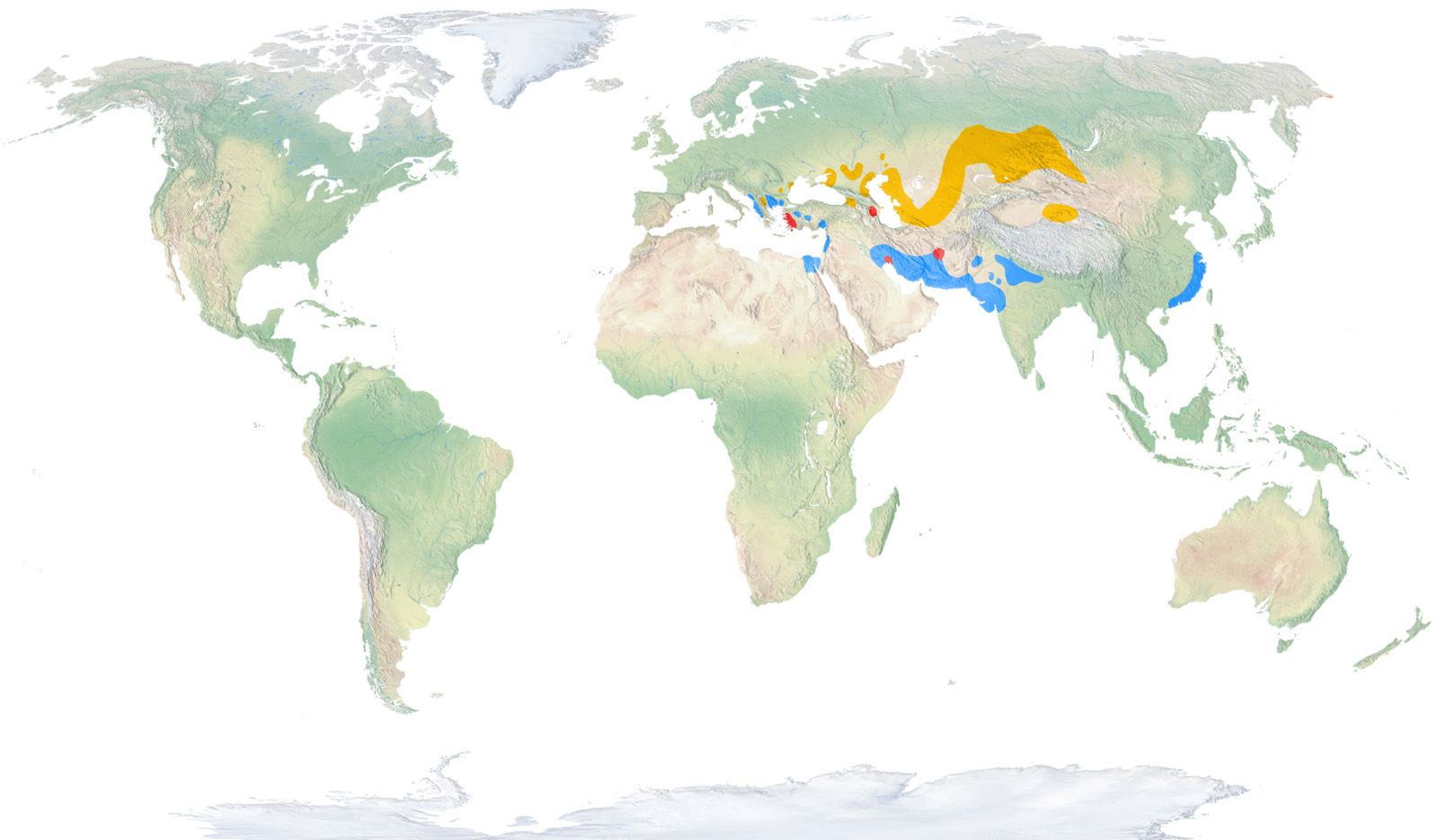
- Distribution / Resident
- Breeding
- Wintering
- Subspecies
Risk level
- Extint
- Extint in the wild
- Critically endangered
- In Danger
- Vulnerable
- Near threatened
- Minor concern
- Insufficient data
- Not evaluated
Taxonomy
Physical characteristics
Biology
Reproduction
Biology
The Dalmatian pelican is a considerably large bird—up to 180 cm long—and quite heavy—some 13 kg—which is characterised by its white and grey plumage, turning blackish on flight feathers. It is the bird with one of the longest wingspans, some 3.5 metres long. It is difficult to distinguish it from the common pelican except when flying. In this case, it can be recognised due to the lack of abundant black colouring under the wings and their much darker white plumage.
The Dalmatian pelican lives on coasts, swamps and shallow lakes in an extensive region ranging from southeast Europe to eastern China.
They can cooperate as a group to feed on fish, leading the school to shallow waters. Then, submerged in the water, they fill their gular pouches with fish and expel the excess water when leaving the water by shaking their heads.
These pelicans form breeding colonies, building nests on land or on aquatic plants. Even though nesting is solitary, they usually form large colonies with up to 250 pairs. They lay one or two eggs that are incubated from 31 to 34 days.
Common migrant to Asia, even though in some regions of southeast Europe they only scatter and travel short distances. Indeed, the European populations are considered the most sedentary.
Despite their extremely large area of distribution, they are currently an endangered species, particularly in Europe, where populations have dropped from millions of specimens at the beginning of the 19th century to only some 1000 pairs in 1980. At present, these populations are less scarce and have reached much higher numbers, although their status worldwide continues to be complex, leading the IUCN to still classify them as vulnerable.



